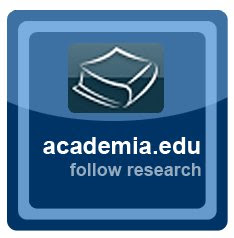My young Years by the side of Harm Wiersma and Ton Sijbrands, Future World Champions
Draughts is more difficult than Chess - 308 pages
ISBN: 978-0-244-66661-3 - 2018 Hard cover Lulu Editors
At
the end of 2017 a draughts player asked me to have translations of some
of my Spanish books that deal with the history of draughts. In one book
I describe my draughts career by the side of Sijbrands and Wiersma, and
in another book of two volumes I describe the life of the draughts
world champion Maurice Raichenbach. I decided to start with the first
book and add some information about my business life in Spain. With
that schoolteachers become aware of the great benefit that draughts has
on the mind of children and their future business possibilities.
There
are not many biographies of draughts players and the books there are
usually deal with the game. It is clear that I did not want to write
them in Dutch, because there are many books about these players in the
Netherlands and I cannot teach them anything. They know much more than I
do. It is much more difficult to see Spanish texts about them and that
was the reason why I wrote books in Spanish about Amadou Kandi,
Woldouby, Maurice Raichenbach, Baba Sy, and others, because hopefully
this way we can rescue future players in South America from obscurity.
This
time I will write in English so that the international players can also
learn about some of the initial draughts lives of Wiersma and Sijbrands
that today can be considered as history.
After
the short introduction to the history of draughts in chapter 1 here
come some words about the other content of this book. I wrote (in
Spanish) the biography of Maurice Raichenbach, for several reasons.
Firstly because with the "Raichenbach coup" against young Sijbrands I
could have become immortal in 1963, as Harm Wiersma said. Secondly
Raichenbach made the same victorious continuation in his game against
Herman de Jongh, as Harm Wiersma did in 1963 against me in the Brinta
Youth Tournament when he was just 10 years old. On the other hand
Raichenbach was noted for his corner game on the board, as I used to
play in 1965. Finally Raichenbach played to win tempi, as I also used to
do in 1965. All these events are explained in chapters 2-6 which
describe my short draughts career. I think that knowing Raichenbach’s
game is necessary, since it now belongs to the theory that we must
master draughts when we play it.
Finally, I am attracted to Raichenbach, because this player left checkers to engage in successful business.
During
my many trips to Africa and South America I saw the way of life of
their inhabitants. Checkers for them is a means of getting out of
isolation. In Holland we already have many African players who make a
living by playing in different draughts clubs. Draughts does not serve
only to earn money, but also to increase our intelligence by 25%.
I
hope my books on checkers will be useful for the young people of
certain countries to come out of their isolation. In this short work the
reader will realize that three children prodigies (Ton Sijbrands, Harm
Wiersma, and Andreas Kuijken), among whom I was lucky to be, began to
make life impossible for Russian draughts players. In this way Holland
gradually regained its hegemony in draughts between 1972 and 1984.
It
is my desire that with my historical works about Woldouby, Maurice
Raichenbach, Baba Sy, other famous draughts players, and my short
draughts career in Holland as expressed in this book readers become
interested in the game of checkers, as was my case in the Netherlands. I
met Baba Sy, visited many foreign countries, and witnessed other
cultures to finally settle in Spain and believe me, I owe a lot to
checkers.
The
game of draughts deserves a more respectful place than it has and in
this sense one should remember that draughts is more difficult than
chess, as is explained in chapter 7 of this book.
Draughts
players are very good at analyzing, tactics, strategy, intuition,
fighting spirit, performance drive, thinking ahead, long-term planning,
numeracy, patience, perseverance, creativity, concentration, logical
thinking, imagination, and many other good qualities. On the other hand
draughts players are very creative. They are often able to discover a
draw in a hopelessly standing position by means of threats or shots.
All of that is explained in chapter 8.
I
left draughts in 1965, but I felt myself playing draughts with the
creation of products in various companies. For me the new products were
like new variants in checkers. Draughts awakened my desire to master
several languages and gave me a very competitive spirit, since I always
wanted to be the best in the world with my products. I was co-owner and
founder of an important company in the world of citrus extracts and
among my wise friends and partners were two rectors of the University of
Murcia.
After
the sale of this company in 1989 to a multinational I did the same job
of competitive intelligence until 2012 (the year of my retirement) in
other new companies, which nowadays are also on a high level in the
world with their products. One of them was sold in 2015 to an Israeli
multinational.Some of my business, draughts and history activities are
explained in chapter 9.
Since
this book will be read by international readers and the term “King” for
the most powerful piece in the game can give confusion to other
speaking countries, I have dedicated some pages to the origin of this
new powerful piece on the board in 1495, such as explained in chapter
10. In Holland we have in the international draughts game a square on
the board on which we place the “kroonschijf” (crown piece) and that is
known in the English game as king-row piece. In chapter 11 I discuss its
Spanish origin.
In
chapter 12 there finally are some words about the Frenchman Dr. Diego
Rodríguez (1940-2015) who gave me a lot of information by phone and sent
me many photos of the draughts tournaments and players in the past. He
was the ambassador of draughts in the Spanish-speaking world and a man
of immense generosity.
I
recommend this book to psycologists and all professionals who work with
children as a source of knowledge and a challenge to think in new
concepts.
Contents
1 History of draughts 1
2 My brief career in draughts 10
2.1 Introduction 10
2.2 The draughts club in Midden-Beemster 10
2.3 The draughts club in Zaandam 10
2.3.1 My mentor Ed Holstvoogd 12
2.4 The child prodigy Tonnie Sijbrands 12
2.4.1 The child prodigy Andreas Kuijken 14
2.5 Sijbrands and Baba Sy 14
2.6 Sijbrands and Grandmaster Keller 14
2.6.1 The Youth Championship of North Holland 1962 16
2.6.2 The Youth Championship of Amsterdam 1962 17
2.6.3 The youth championship of North Holland 1963 18
2.6.4 The Dutch Youth Championship 1963 26
2.6.4.1 Piet Roozenburg 27
2.7 My mentor Ed Holstvoogd, in Yalta. 34
2.8 The senior championship of North Holland, 1963. 38
2.9 The great work of Keller 39
2.10 The Brinta Youth Tournament, 1963 42
2.10.1 The child prodigy Andreas Kuijken 50
2.11 The confession of Sijbrands 63
2.11.1 Prediction 63
3 The year 1964 65
3.1 Correspondence with Sijbrands 66
3.2 Harm Wiersma 67
3.3 The come back of Sijbrands 68
3.3.1 The Youth Championship of North Holland 68
3.3.2 The Youth Championship of Holland 70
3.3.3 The Hoogezand Youth Tournament 72
3.3.4 The Youth Tournament of Huizen 73
3.3.4.1 Ed Holstvoogd 73
3.3.5 The V.O.S. Tournament 74
3.3.6 The Amsterdam Tournament 74
3.4 Harm Wiersma again 76
3.5 The World Championship in Merano 78
4 The year 1965 83
4.1 Ed Holstvoogd 83
4.2 Harm Wiersma 87
4.3 Rudi Palmer 90
4.4 Ton Sijbrands 95
4.4.1 North Holland’s Youth Championship, 1965 95
4.4.2 The National Senior Championship 96
4.5 The Third International Brinta Tournament 98
4.5.1 Ton Sijbrands 98
4.5.2 Ruud Palmer 104
4.6 The European Draughts Championship 105
4.6.1 Andreas Kuijken 105
4.7 The Turkstra Youth Tournament 107
4.8 The Turkstra Senior Tournament 110
4.8.1 Ton Sijbrands 110
4.9 The Senior Championship of the North-Holland province 111
4.9.1 Ton Sijbrands, Ed Holstvoogd, Govert Westerveld 111
5 The year 1966 119
5.1 Botter Tournament in Volendam 119
5.2 Ton Sijbrands 124
5.2.1 The simultaneous exhibition of Sijbrands in Purmerend 124
5.3 Harm Wiersma 135
6 Finally the child prodigies among the best 136
6.1 The year 1967 136
6.2 Harm Wiersma 138
7 Draughts is more dificult than Chess 143
7.1 Seeing Draughts 143
7.1.1 Dr. Max Euwe 143
7.1.2 Edgar Allan Poe 145
7.1.3 Dr. Marion Tinsley 147
7.1.4 Irving Cherney 148
7.1.5 François André Danica Philidor 148
7.1.6 Harry N. Pillsbury 149
7.1.7 Gerard Welling 149
7.1.8 H. Kramer 150
7.1.9 A Draughts writer 150
7.1.10 Albert Huisman 150
7.1.11 Hans Vermin 151
7.1.12 Anton Dusseldorf 152
7.1.13 Jack de Haas 152
7.1.14 Ron Heusdens 153
7.1.15 Palmans 154
7.1.16 Jannes van der Wal 154
7.1.17 Hendrik van der Zee 155
7.1.18 Alexei Tsjizjov 156
7.1.19 Eddy Budé 156
7.1.20 V. Cornetz 157
7.1.21 Harm Wiersma 157
7.2 Blind Draughts 157
7.2.1 Newell William Banks 158
7.2.2 Erno Prosman 159
7.2.3 Ton Sijbrands 160
7.3 Computers 161
7.3.1 Draughts on the 64-square board 161
7.3.2 Chess 162
7.3.3 Draughts on the 100-square board: 162
7.4 Mathematics 162
8 The great advantage of draughts 165
8.1 Acceptance of the rules 165
8.2 Acceptance of the result 165
8.3 Analysis 165
8.4 Attention 166
8.5 Self-criticism 166
8.6 Concentration 166
8.7 Creativity 166
8.8 Decision making 166
8.9 Emotional control 167
8.10 Empathy 167
8.11 Goal setting 167
8.12 Imagination 167
8.13 Increase reading ability 167
8.14 Initiative. 167
8.15 Mathematical logical reasoning 168
8.16 Memory 168
8.17 Numerical operation 168
8.18 Organization 168
8.19 Prevention of Alzheimer’s 168
8.20 Prevention of Parkinson’s 169
8.21 Responsibility 170
8.22 Self-esteem 170
8.23 Social skills 170
9 My way of playing draughts 171
9.1 In Business 171
9.2 In History 197
9.2.1 The history of the Moriscos (Morisks) 197
9.2.2 The history of draughts 204
9.2.3 The unknown authors of La Celestina 216
9.2.3.1 Intuition 220
9.2.3.2 Stylometry 222
9.2.3.3 Study of ancient Spanish words 222
10 The King 224
10.1 Isabella I of Castile as the 224
Virgin Mary on the chessboard 224
10.1.1 Notre Dame 225
10.1.2 Gesta Romanorum in England 227
10.1.3 Nubian queen 227
10.1.4 The queen replaced the vizier 228
10.1.5 The Virgin Mary in France 228
10.1.6 The Firzan to Alferza and Virgin Mary 230
10.1.7 Lucena and the Gesta Romanorum 231
10.1.8 Professor Petzold 232
10.1.8.1 Pope Pius II 232
10.1.8.1.1 Juan Ramírez de Lucena 233
10.1.8.2 Dr. Miguel Albert 235
10.1.8.2.1 Scachs d’amor 236
10.1.8.3 Isabella I of Castile 236
10.1.9 Virgin Mary and Isabella I of Castile 240
10.1.10 The Satiric School in Valencia 254
11 The king-row piece 258
11.1 Timoneda in 1547 258
11.2 Lucena in 1520 259
11.3 King in the beginning 261
12 Dr. Diego Rodríguez of France 265
13 Bibliography: 270



























